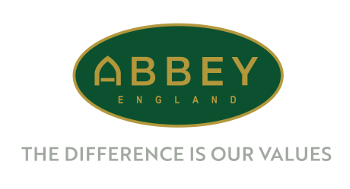Not got an account? Register as a business or hobbyist here.
Tooling Leather
1
2
OUR LEATHER GUIDE FOR BEGINNERES
Are you unsure about which type of leather to use for your next leather project? Read our guide below to find out the best kind of leather for every project.
Belts
Our Sedgwick mini butts are perfect for making belts. Shorter than bridle butts, traditional belt makers use these mini butts as they tend to be the correct length. This means you will end up with less wastage and you don’t have the slightly stretchy part of the shoulder at one end.If you require a longer belt, then the bridle butt is prefect. We stock the Sedgwick’s range of bridle butts, as well as a range of John Whites bridle butt and Italian bridle butts.
Although shoulder leather is not advised, if you would like a non-grease option you could use the Sedgwick 1900 Collection in 3.2 mm thickness. Shoulder leather should only be used in 3mm thickness or above when making belts.
Dog Collars
The type of leather you use for making dog collars will depend on the look of your final product. The weight and thickness of the leather will also depend on the type of dog you collar is designed for. For example, a 2 mm leather would not be suitable for a larger dog for and a 4 mm leather would not be suitable for a small dog.Due to its strength, the best leather to use is bridle butt leather. The black, Australian nut, dark Havana, hazel or conker colour options are more resistant to water spot damage and are less likely to fade. Red, Green, Blue, Light Havana and London Tan are not recommended however. Our mini bridle butts are a good option if you do not require the additional length of a standard butt.
If you want to add some padding to your collar, we recommend the soft plastazote in 6mm thickness.
Dog Leads
For leads, bridle butts are best as you don’t want them to stretch. If you are looking to make a longer lead, you may require bridle back leather.Wallets
For wallet making, you ideally want your leather to be around 1mm – 1.5mm thick. We recommend using vegetable tanned pig skin, which has a beautiful texture to it. Our top choice is the greased pig skin as it has a lovely soft feel.Leather Bags
The Sedgwick 1900 Collection is our top choice for bag making. It is a lovely looking leather with everything on show and available in a range of beautiful colours. The 2.3mm thickness is perfect for making a whole range of bags.If you are looking to make a cartridge bag, we recommend using a vegetable tanned shoulder that is around 2.5mm thick. The Sedgwick 1900 collection would be suitable or, if you are after something a bit different, the Sedgwick’s bag hide would be a good option in the wheat print option.
Not got an account? Register as a business or hobbyist here.
2 product(s) found
Tooling Leather
1
2
take your leather to the next level with abbey.
Discover premium tooling leather from Abbey England, your trusted source for high-quality leather materials. Our range of tooling leather is perfect for professional leather-workers as well as beginners, offering exceptional durability and work-ability for all your crafting needs. Each piece of our tooling leather is carefully selected to ensure it meets the highest standards of quality, providing a smooth surface that's ideal for a detailed carving and stamping.
Abbey England's tooling leather range is renowned for it's consistent thickness and firmness, allowing for precise and intricate designs. Whether you're creating belts, wallets, or custom leather goods, our tooling leather ensures a professional finish every time. The superior quality of our tooling leather means it holds impressions beautifully, making your designs stand out with clarity and depth.
Experience the versatility and reliability of Abbey England's tooling leather. Perfect for both beginners and experienced craftsmen, our leather is easy to work with and responds well to dyes and finishes. Enhance your leather-working projects with the finest tooling leather available, trusted by crafters around the world.
Choose Abbey England for all your tooling leather needs and elevate your craftsmanship to new heights. Shop our extensive range today and discover why our tooling leather is the preferred choice for discerning leatherworkers.
Abbey England's tooling leather range is renowned for it's consistent thickness and firmness, allowing for precise and intricate designs. Whether you're creating belts, wallets, or custom leather goods, our tooling leather ensures a professional finish every time. The superior quality of our tooling leather means it holds impressions beautifully, making your designs stand out with clarity and depth.
Experience the versatility and reliability of Abbey England's tooling leather. Perfect for both beginners and experienced craftsmen, our leather is easy to work with and responds well to dyes and finishes. Enhance your leather-working projects with the finest tooling leather available, trusted by crafters around the world.
Choose Abbey England for all your tooling leather needs and elevate your craftsmanship to new heights. Shop our extensive range today and discover why our tooling leather is the preferred choice for discerning leatherworkers.
OUR LEATHER GUIDE FOR BEGINNERs
Are you unsure about which type of leather to use for your next leather project? Read our guide below to find out the best kind of leather for every project.
Belts
Our Sedgwick mini butts are perfect for making belts. Shorter than bridle butts, traditional belt makers use these mini butts as they tend to be the correct length. This means you will end up with less wastage and you don’t have the slightly stretchy part of the shoulder at one end.If you require a longer belt, then the bridle butt is prefect. We stock the Sedgwick’s range of bridle butts, as well as a range of John Whites bridle butt and Italian bridle butts.
Although shoulder leather is not advised, if you would like a non-grease option you could use the Sedgwick 1900 Collection in 3.2 mm thickness. Shoulder leather should only be used in 3mm thickness or above when making belts.
Dog Collars
The type of leather you use for making dog collars will depend on the look of your final product. The weight and thickness of the leather will also depend on the type of dog you collar is designed for. For example, a 2 mm leather would not be suitable for a larger dog for and a 4 mm leather would not be suitable for a small dog.Due to its strength, the best leather to use is bridle butt leather. The black, Australian nut, dark Havana, hazel or conker colour options are more resistant to water spot damage and are less likely to fade. Red, Green, Blue, Light Havana and London Tan are not recommended however. Our mini bridle butts are a good option if you do not require the additional length of a standard butt.
If you want to add some padding to your collar, we recommend the soft plastazote in 6mm thickness.
Dog Leads
For leads, bridle butts are best as you don’t want them to stretch. If you are looking to make a longer lead, you may require bridle back leather.Wallets
For wallet making, you ideally want your leather to be around 1mm – 1.5mm thick. We recommend using vegetable tanned pig skin, which has a beautiful texture to it. Our top choice is the greased pig skin as it has a lovely soft feel.Leather Bags
The Sedgwick 1900 Collection is our top choice for bag making. It is a lovely looking leather with everything on show and available in a range of beautiful colours. The 2.3mm thickness is perfect for making a whole range of bags.If you are looking to make a cartridge bag, we recommend using a vegetable tanned shoulder that is around 2.5mm thick. The Sedgwick 1900 collection would be suitable or, if you are after something a bit different, the Sedgwick’s bag hide would be a good option in the wheat print option.



 Deutsch (Deutschland)
Deutsch (Deutschland) Español (España)
Español (España) Français (France)
Français (France) Italiano (Italia)
Italiano (Italia)
